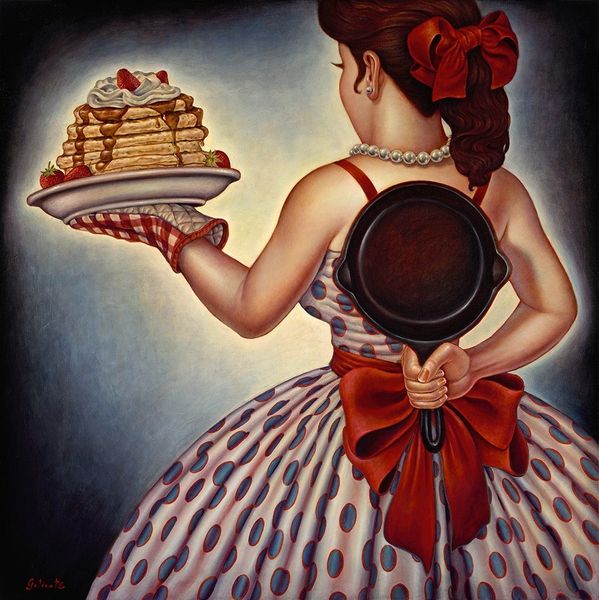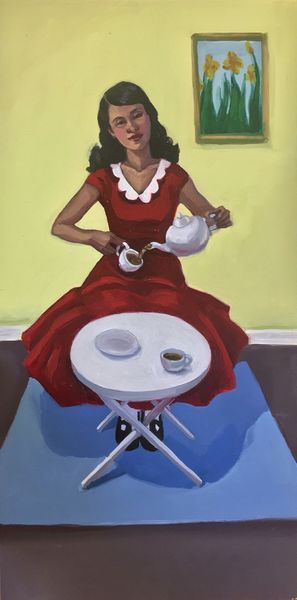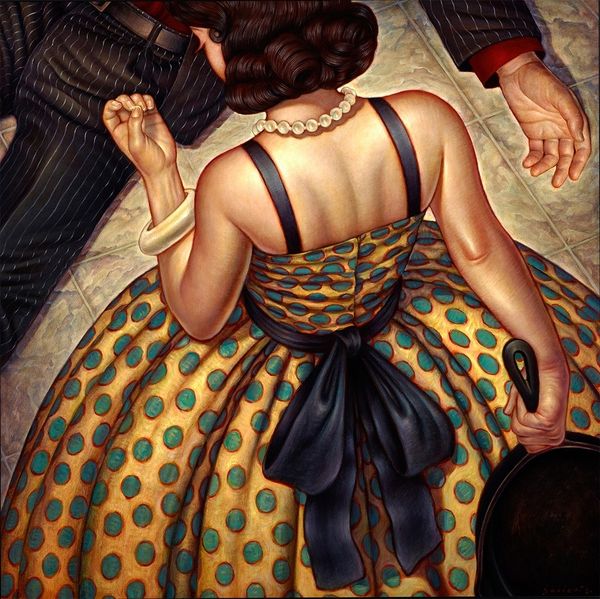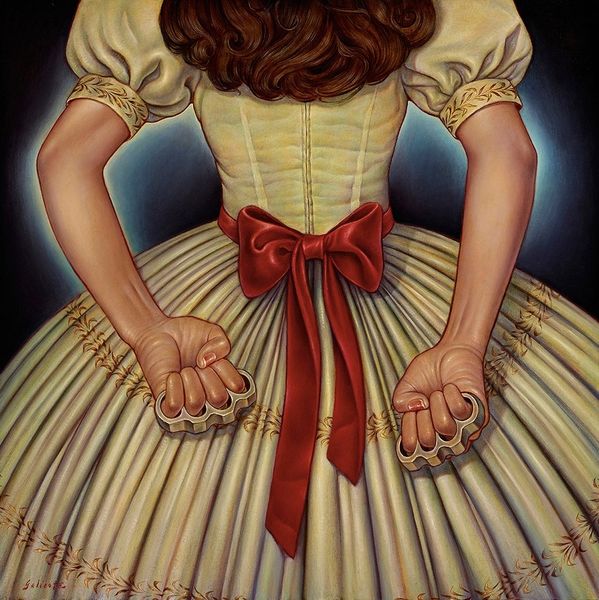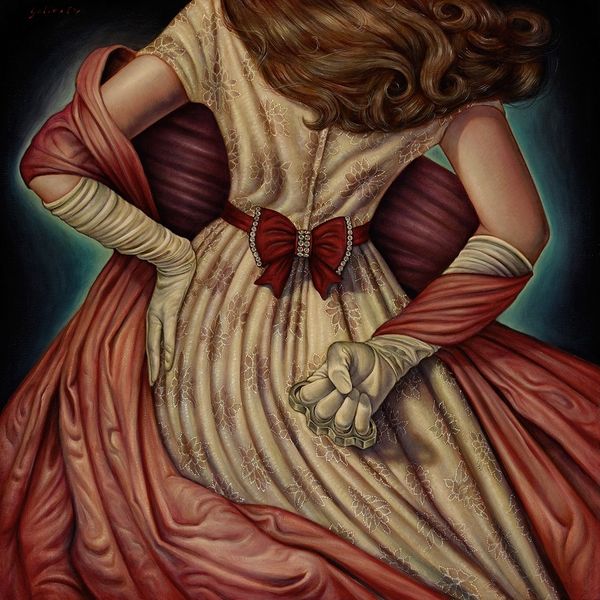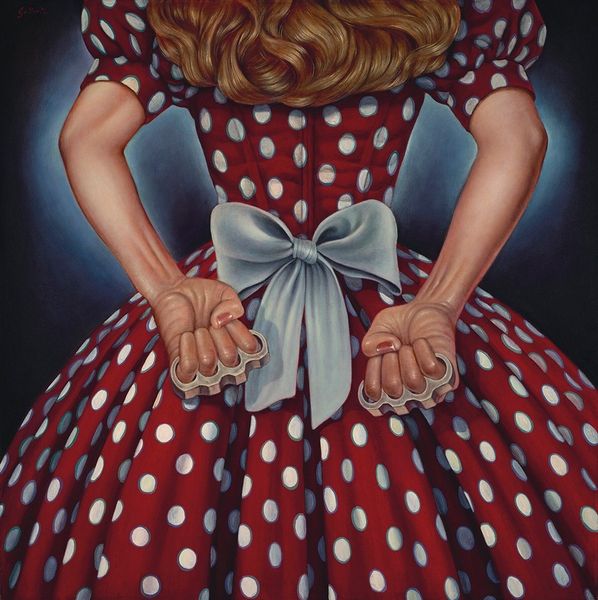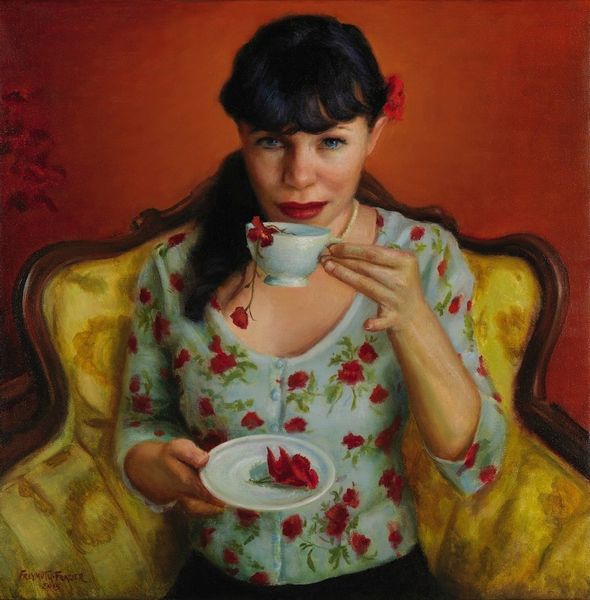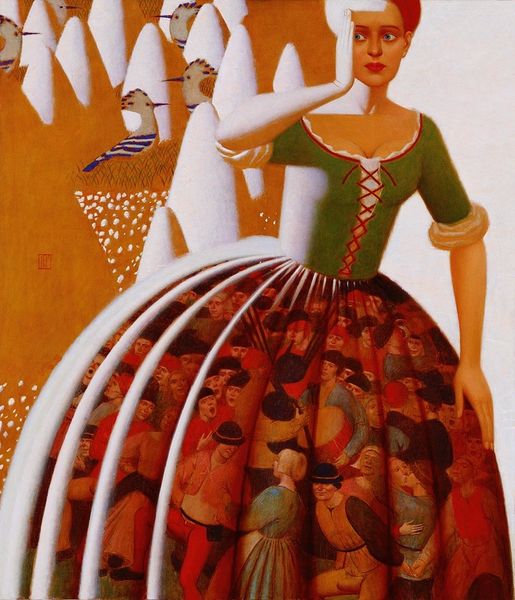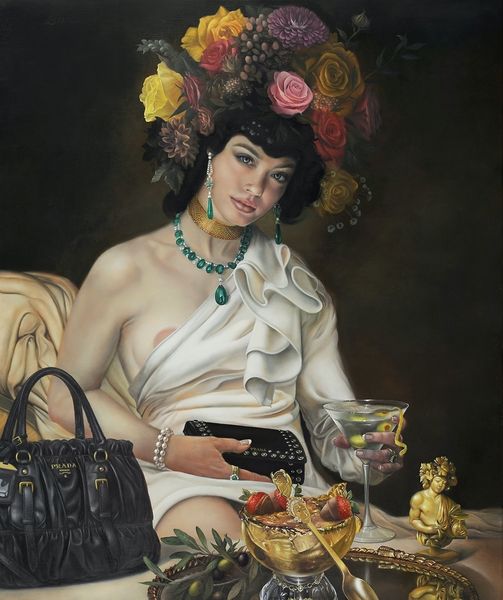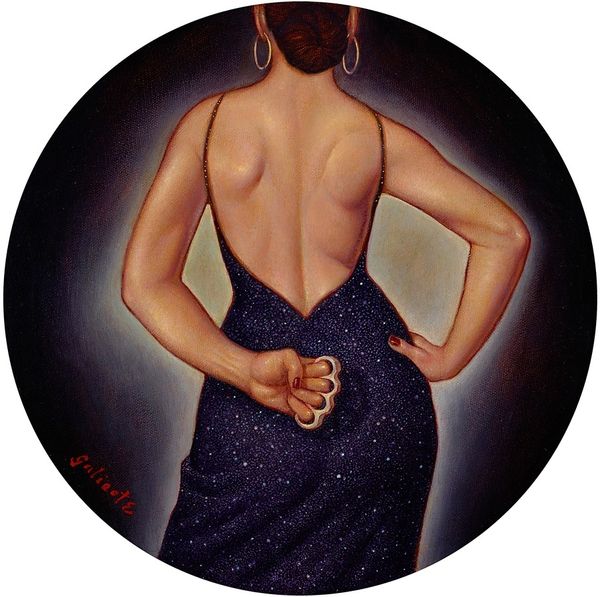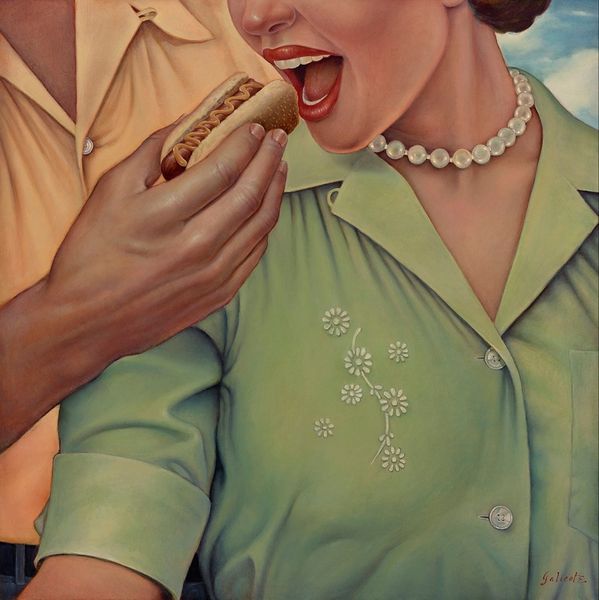
painting
#
portrait
#
figurative
#
character portrait
#
painting
#
figuration
#
portrait reference
#
portrait head and shoulder
#
animal portrait
#
animal drawing portrait
#
genre-painting
#
facial portrait
#
portrait art
#
modernism
#
fine art portrait
#
celebrity portrait
#
digital portrait
Copyright: Modern Artists: Artvee
Curator: Let’s take a look at Danny Galieote’s artwork titled "Welcome Home Honey." Editor: It strikes me immediately as a piece with intriguing dualities—a cheerful cake presentation versus what looks like a weaponized cast iron pan! Curator: Absolutely. This digital painting portrays a woman from the back, in a domestic setting perhaps, wearing a pearl necklace and holding a cake, while also concealing a cast iron pan behind her. It’s fascinating to examine the social commentary. The visual narrative challenges the stereotypical image of the happy homemaker by unveiling hidden layers of tension. Editor: I’m compelled by the use of lighting. There's this almost unnatural, bright glow emanating from the subject that throws her and the cake into stark relief against the darker background. The stark contrasts draw our eyes to specific points. This creates an undeniably theatrical mood and underscores the artist’s compositional intent. Curator: The color choices also highlight social constructs and roles—a colorful polka dot dress which signifies femininity in opposition to the stark black of the pan which hints at conflict, and the way the red bow mirrors the shade of the cake topping creates a visual harmony with jarring undercurrents. It is speaking about performativity within the domestic space. Editor: Note the surface treatment. While the artist utilizes digital techniques, there is an admirable faux-painterly approach to rendering skin tone and the texture of the cake. These details keep the scene grounded rather than venturing fully into hyperrealism. It creates depth, and enhances the emotive capabilities of the piece, really making the cake appear rich and delicious. Curator: Ultimately, "Welcome Home Honey" offers a powerful, intersectional message about identity, the pressures put on women in domestic spaces, and perhaps also hints at suppressed agency. It becomes a statement on social expectation and rebellion, cleverly packaged in a seemingly traditional portrayal. Editor: I appreciate your read of it. I came seeking a discourse about formal qualities, but it does resonate; seeing that hidden darkness cleverly poking out from what at first looks like mid-century domesticity makes you wonder about the artist's narrative ambitions.
Comments
No comments
Be the first to comment and join the conversation on the ultimate creative platform.
